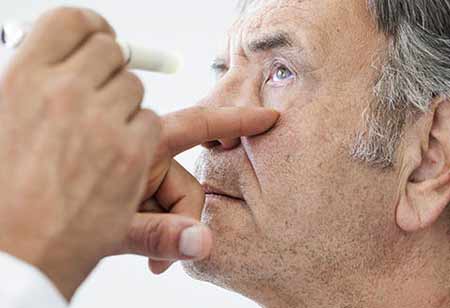A Closer Look at Age-Related Vision Problems
Some of the most common age-related visual problems include cataracts, glaucoma, and age-related macular degeneration (AMD).

By
Medical Care Review | Friday, February 28, 2025
Stay on top of your health and well-being with exclusive feature stories on the top medical clinics and treatment centers, expert insights and the latest news delivered straight to your inbox. Subscribe today.
FREMONT, CA: As people age, their vision may alter. But eye problems should not be dismissed as usual. Some issues arise from new or worsening eyesight abnormalities. As individuals get older, these things may happen gradually. Others come suddenly and quickly, producing blindness. That is why regular eye exams are so vital. One can take precautions to reduce their risk of age-related visual issues. Or, if they have changes, they can slow them down.
Age-related vision problems are listed below:
Glaucoma: It is a set of eye illnesses that lead to vision loss. High pressure inside the eye, as well as inadequate circulation, induces optic nerve injury. This nerve conveys images from the eye to the brain. The more frequent varieties of glaucoma develop slowly and without obvious symptoms at first. Individuals might not realize they have it. However, glaucoma can cause blindness. Age increases the likelihood, as do these factors:
● African or Hispanic ancestry
● Family history of glaucoma
● Previous eye injury
● Excessive near or farsightedness
● Low blood pressure or elevated eye pressure
● Diabetics
Eye drops, additional medications, laser therapy, and surgery are all options for treatment.
Cataracts: A cataract causes the eye's lens to become hazy, resulting in blurry vision. They're frequently related to aging. Half of all Americans have them by the age of 80.
Cataract symptoms typically appear gradually and may include:
● Blurry, hazy, or dim eyesight is similar to peering through a filthy windshield.
● Sensitive to light and glare
● Double vision with one eye.
● Haloes surrounding lights
● Faded or yellow colors, or difficulty distinguishing between blues and greens.
● Having trouble spotting an object against a background of the same color.
● These factors increase one's risk of developing cataracts:
● Smoking
● Lots of exposure to sunshine.
● Elevated blood pressure or cholesterol
● Diabetics
● Previous eye injuries or surgeries
● Cataracts in the family history
Initially, updating the eyeglasses or contact prescription would suffice. Reading using brighter lights or a magnifying glass may also assist.
If halos or glare are an issue, minimizing night driving is suggested. Glare can occur during the day, so keeping one's vision prescription up to date is necessary. One might also inquire whether special tinting can reduce glare. If a cataract begins to interfere with one's daily activities, a trained ophthalmologist can remove the hazy lens and exchange it with a clear implant.
Other Retinal Disorders: Diabetic retinopathy results from uncontrolled diabetes. It develops when the retina's blood vessels swell and start to leak fluid or bleed. Symptoms include blurry vision and difficulty reading. Laser treatment can "zap" leakage in the early stages of the disease, perhaps avoiding more serious problems. However, the most effective technique for protecting vision is to supervise and maintain normal blood sugar levels.







